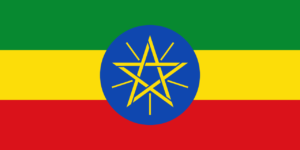Ethiopia | History, Capital, Language, Flag, Facts & Geography of Ethiopia
History of Ethiopia:
The Kingdom of Ethiopia is one of the oldest kingdoms in the world and arguably the oldest independent country in Africa. Ancient Ethiopia is mentioned in both Greek and Hebrew history. Unlike most other African territories and countries, Ethiopia was able to avoid European colonization. Italy occupied the country for several years during World War II, but withdrew after its defeat.
In modern times, Ethiopia has been ravaged by famine and a military coup. In 1974, Emperor Haile Selassie was forcibly deposed by the military and a socialist state was established. Ethiopia has a long history of unrest and civil war. Refugees suffered from hunger as various military regimes competed for power. A degree of peace was restored in 1995 with the introduction of a constitution and multiparty elections. Ethiopia currently has a border dispute with Eritrea.
Get Free Counseling
Information about Ethiopia:
| Capital | Addis Ababa |
| Population | 127,088,580 (Source: 2023 worldometer) |
| Major Cities | Addis Ababa (capital), Lalibela, Dire Dawa, Gonder, Bahir Dar, Mekelle, Aksum, Harar, Awasa |
| Borders | Eritrea to the north, Djibouti to the northeast, Somalia to the east, Kenya to the south, and South Sudan and Sudan to the west |
| Gross Domestic Product (GDP) | $126,783,000,000 (2022 worldometer) |
| Currency | birr (ETB) |
Flag of Ethiopia:
Ethiopia Economy Key Industries:
Ethiopia Major Industries: food processing, beverages, textiles, leather, chemicals, metals processing, cement
Ethiopia Agricultural Products: cereals, pulses, coffee, oilseed, cotton, sugarcane, potatoes, qat, cut flowers; hides, cattle, sheep, goats; fish
Ethiopia Natural Resources: small reserves of gold, platinum, copper, potash, natural gas, hydropower
Ethiopia Major Exports: coffee, qat, gold, leather products, live animals, oilseeds
Ethiopia Major Imports: food and live animals, petroleum and petroleum products, chemicals, machinery, motor vehicles, cereals, textiles
The Geography of Ethiopia:
Total Size of Ethiopia: 1.112 million km² (source: wikipedia)
Geographical Low Point of Ethiopia: Denakil Depression -125 m
Geographical High Point of Ethiopia: Ras Dejen 4,620 m
Climate of Ethiopia: tropical monsoon with wide topographic-induced variation
General Terrain of Ethiopia: high plateau with central mountain range divided by Great Rift Valley
World Region or Continent of Ethiopia: Africa
Geographical Coordinates: 8 00 N, 38 00 E
The People of Ethiopia & Culture
Ethiopia Government Type: federal republic
Ethiopia Nationality: Ethiopian(s)
Ethiopia National Holiday: National Day (defeat of MENGISTU regime), 28 May (1991)
Ethiopia Independence: oldest independent country in Africa and one of the oldest in the world – at least 2,000 years
Ethiopia National Symbol: Abyssinian lion
Ethiopia National Anthem or Song: Whedefit Gesgeshi Woud Enat Ethiopia (March Forward, Dear Mother Ethiopia)
Ethiopia Languages Spoken: Amharic, Tigrinya, Oromigna, Guaragigna, Somali, Arabic, other local languages, English (major foreign language taught in schools)
Ethiopia Religions: Muslim 45%-50%, Ethiopian Orthodox 35%-40%, animist 12%, other 3%-8%
Interesting Facts about Ethiopia:
Ethiopia is considered the birthplace of coffee and is still an important part of the country’s culture and economy. Ethiopian coffee is known for its unique flavor and is very popular among coffee lovers.
Ethiopian cuisine is flavorful and varied and includes dishes such as injera (sourdough flatbread), wat (spicy stew) and kitfo (raw ground beef or lamb).
Ethiopia is home to ancient civilizations such as the Aksumit Empire and the UNESCO World Heritage Site of Lalibela with its rock-hewn churches.
Ethiopia is also the only African country that has never been colonized by a European power. Ethiopian runners have won numerous Olympic and World Championship medals in long-distance running, including the marathon.
Ethiopia is home to a wide variety of wildlife, including rare species such as the Ethiopian wolf and the gelada baboon.
Ethiopia is home to the world’s oldest Christian community, and the Ethiopian Orthodox Church is the country’s primary organization.
Ethiopian music is characterized by distinctive rhythms and instruments such as the kraal (6-string lyre) and mashinko (one-string violin).
Ethiopia is home to some of Africa’s highest peaks, including Ethiopia’s highest peak and Africa’s fourth highest mountain, Rasdashen.
